The arm is held in place at the shoulder joint by a group of tendons and muscles named the rotator cuff. The rotator cuff muscles help the arm move at the shoulder joint. Injuring or overextending the rotator cuff can cause a tear in the tendons, which can only be repaired with rotator cuff surgery. The surgery can be done with an open incision, or with small incisions (shoulder arthroscopy).
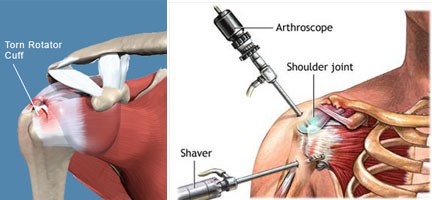
What You Will Experience During Rotator Cuff Surgery Recovery
Postoperative
Rotator cuff surgery is an ambulatory procedure, which means a short 1-2 hour stay in the recovery room post surgery before discharge. In the recovery room, your responsiveness will be monitored and pain medication will be administered. Someone will have to drive you home and stay with you for at least one night.
At Home
It will take several weeks to fully recover, but an arthroscopic procedure yields a faster rotator cuff surgery recovery time than open surgery does.
- In the first week of recovery you’ll experience some discomfort and pain, and it may last several weeks if your surgery was more extensive. You can use ice for the pain, or medication prescribed by your doctor. You may feel some discomfort if you lay flat, because it pulls on your shoulder. It doesn’t affect the healing process, but try sleeping propped in the beginning of recovery.
- In a few days you’ll be able to remove your bandages and use Band-Aids on your wounds. When your wounds stop draining, you can shower but be gentle on your incisions.
- It’s likely your doctor will recommend using an immobilizer or sling for some time during the surgery recovery.
What Is the Rotator Cuff Surgery Recovery Time?
Full recovery is quite extensive and can last as long as six months. Each patient is unique, but generally recovery time varies based on how severe the tear was.
Recovery Phase 1: Passive Motion
In the passive motion phase, the tendons and muscles of the rotator cuff are not being used; this phase of recovery can last for as much as 6 weeks. Contracting the rotator cuff muscles causes tension, so you should only move your shoulder without using the rotator cuff. You will learn how to move your shoulder without tension with your therapist.
Recovery Phase 2: Active Motion
After your shoulder has healed some, you will be able to initiate active motion. With active motion you will start to move your arm on your own without added resistance, so without lifting, pushing, or pulling significant weight. This phase of recovery can limit you to active motion for 12 weeks after surgery.
Recovery Phase 3: Strengthening
Your rotator cuff muscles weaken considerably from the point of injury on, which means the strengthening phase is very important. After your muscles have healed enough, the strengthening process will help you resume normalcy. You will get a great work out from strengthening exercises that can be done with light weights and resistance bands. Your therapist will show you isolation techniques to engage the right muscles.
Recovery Phase 4: Full Activity
Full rotator cuff surgery recovery takes about 4 to 6 months, and sometimes longer. This time is variable upon the tear’s severity, and your devotion to rehabilitation. Transitioning gracefully through the phases of rehabilitation is key, and everyone is different. You must strictly stick to the recovery protocol that has been prescribed by your surgeon.
Rotator Cuff Surgery Recovery Exercises
With a shoulder injury, it’s important to focus on flexibility and strength in the recovery process. With limited to no range of motion, even the simplest tasks can cause stiffness in the shoulder. Also, further injury can occur if exercises are done incorrectly, so it’s extremely important to not put any stress on the healing muscles in recovery.
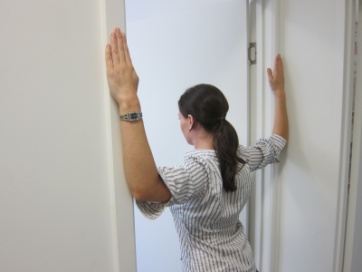 1. Doorway Stretch
1. Doorway Stretch
- Stand in a doorway and open your arms out to the sides, warming up your muscles.
- At shoulder height or lower, hold on to the doorway and lean your body forward until you start to feel a bit of a stretch.
- As you lean, make sure your back is straight, shifting your weight to your toes. Don’t over extend.
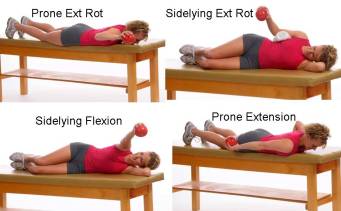 2. Side-Lying External Rotation
2. Side-Lying External Rotation
- Lie down on your good shoulder and rest your injured arm on your side, bend your elbow 90 degrees with your forearm across your mid-section.
- With a light dumbbell and your elbow on your side, gently lift up towards the ceiling. Stop when you feel tension.
- Hold it there for a couple of seconds, and bring it back down to your starting point.
- Do three sets of 10.
3. High-to-Low Rows
- With a resistance band at shoulder height, go down on the knee of the same side of your body as your injured shoulder, facing the band.
- Stretch your injured arm out to hold the band and pull towards you, maintaining good posture. Try to squeeze together your shoulder blades. Don’t twist.
- Do three sets of 10.
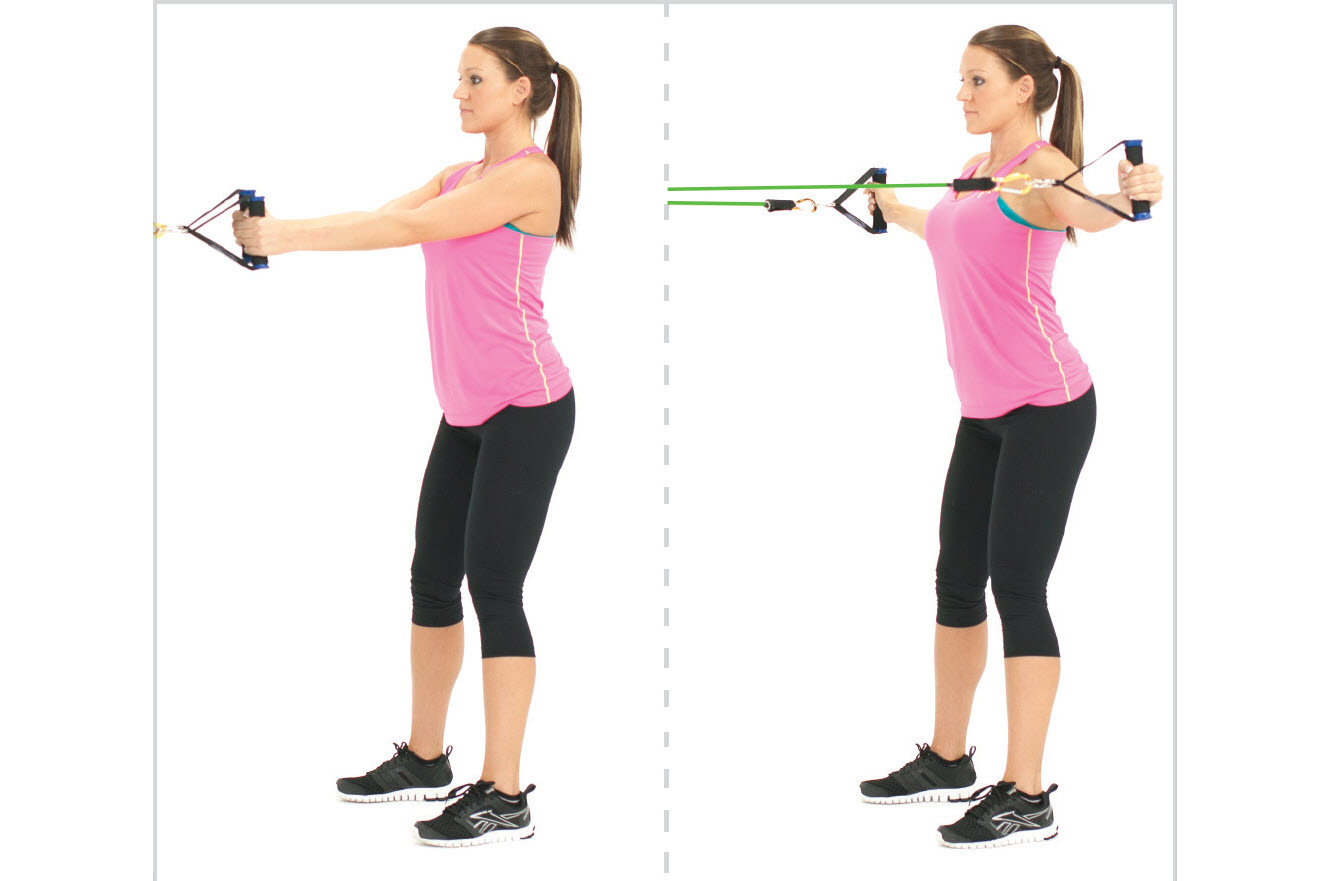 4. Reverse Fly
4. Reverse Fly
- Keep your feet shoulder-width apart, knees slightly bent, and a straight back. Bend at the waist forward.
- Holding light weights in your hands, straighten your arms and raise them on the side, not past shoulder height, and bring your arms down again.
- Do three sets of 10.
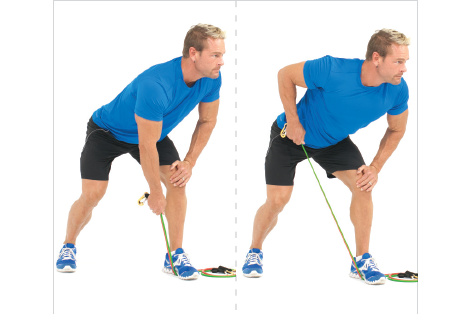 5. Lawn Mower Pull
5. Lawn Mower Pull
- Secure a resistance band with the foot that’s opposite to your injured shoulder and hold the band in your hand.
- Bend at the waist and keep your knees loose, keeping your other hand on your hip.
- Slowly make the lawn mower motion by straightening your body and pulling the band up and across your ribs.
- Do three sets of 10.
Find the exercise plan that suits you here.
